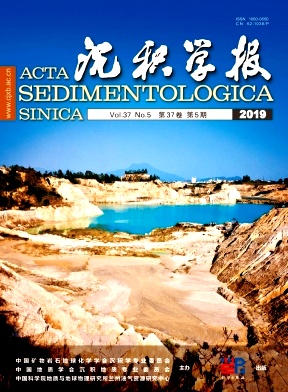Flood-generated Massive Sandstones of the Sanshuihe Outcrop in the Triassic Ordos Basin: Evidence from sedimentary textural characteristics
doi: 10.14027/j.issn.1000-0550.2018.186
- Received Date: 2018-09-06
- Rev Recd Date: 2018-11-26
- Publish Date: 2019-10-10
-
Key words:
- massive sandstone /
- hyperpycnal flow /
- deep-water deposition /
- grain size analysis /
- Ordos Basin
Abstract: Deep-water massive sandstones are a significant target for hydrocarbon exploration because of their good reservoir quality,weak heterogeneity and well accumulation conditions. Sedimentary process identification for massive sandstones is more difficult than for cross bedded sandstones. Therefore,the study of the genesis of massive sandstones directly affects the understanding of their sedimentary process,and restricts reconstruction both of their sedimentary model and of their reservoir predictive geological model. In this study,the grain composition,grain size parameters and their vertical changes in massive sandstone were examined using thin sections and laser particle size analysis of high-density rock samples of Late Triassic medium-bed and very-thick-bed sandstones in the Sanshuihe outcrop in Xunyi county,southern Ordos Basin. The study showed the following. (1)The massive sandstones are fine to very fine feldspathic sandstones containing floating gray-black and red-brown muddy clasts,with ball-and-pillow structures and groove casts. (2)The massive sandstone and the overlying and underlying massive sandstones and cross-bedded sandstone layers contain thin to very thin layers of gray-black mudstones and oil shale,commonly with abrupt contacts between the massive sandstone and mudstone/oil shale. (3)Thin section analyses indicated that the massive sandstones are poorly sorted,angular to sub-angular,and of lower-to-medium maturity in composition and structure. (4)In terms of particle size composition,the jump component and suspended component each account for about 50%,indicating that the bed load and the suspended load are both present and contribute equally. (5)The skewness of each component is similar to that of turbidites,but their sorting is slightly worse,and is far worse than in delta deposits. (6)In the vertical direction,there are multi-period decimeter-level compound rhythms in the massive sandstone,with thicknesses ranging from 10 to 30 cm. The geological background,sedimentary and microscopic structures,grain size composition,handling process and sedimentary differentiation throughout the study area all suggest that the massive sandstones are deposits from flood-induced hyperpycnal flows. This study adds to the understanding of the genesis of deep-water massive sandstones and the structure of hyperpycnally formed massive sandstones, and provides a guide for the identification of hyperpycnal flow deposits.
| Citation: | ZHANG GuoDong, XIAN BenZhong, CHAO ChuZhi, SONG DeLin, LIU JianPing, YU Shuo, WANG XinRan, YAN Qi. Flood-generated Massive Sandstones of the Sanshuihe Outcrop in the Triassic Ordos Basin: Evidence from sedimentary textural characteristics[J]. Acta Sedimentologica Sinica, 2019, 37(5): 934-944. doi: 10.14027/j.issn.1000-0550.2018.186 |






 DownLoad:
DownLoad: